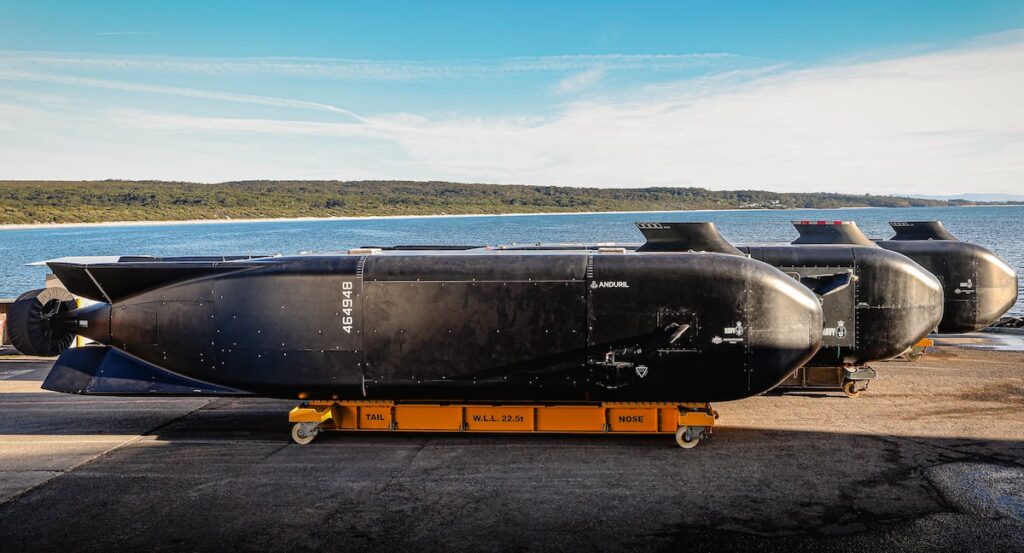
CHRISTCHURCH, New Zealand — In a strategic move to bolster its naval capabilities, Australia has placed an order with Anduril Australia for a fleet of advanced unmanned submarines. This decision comes as the nation continues to await the delivery of nuclear-powered submarines. The Royal Australian Navy’s deal, announced on September 10, was officially signed on August 26 and involves the procurement of Ghost Shark extra-large unmanned underwater vehicles (XLUUVs) over the next five years.
The contract, valued at A$1.7 billion (approximately US$1.12 billion), includes not only the production of Ghost Sharks in Australia but also their sustainment and further development. The rapid progression from contract signing to production, expected to be completed within three years, underscores the urgency and importance of this initiative.
Accelerated Production and Strategic Importance
Low-rate initial production of the Ghost Sharks has already begun, with plans to ramp up to high-rate production next year. Anduril Australia has emphasized its capability to produce large quantities of these all-electric submarines for both Australia and its allies. Defence Minister Richard Marles highlighted the significance of this project, stating, “The Ghost Shark is a world-leading platform made right here in Australia. Over the next five years and beyond, it will give the navy the intelligence, surveillance, and strike capabilities it needs.”
Australia’s commitment to this program is evident, with A$145 million already invested in the development since April 2022. Anduril Australia has successfully delivered three prototypes and mission payload modules ahead of schedule, showcasing the project’s momentum.
Technological Advancements and Expert Insights
The Ghost Shark is engineered to support multiple mission payloads, all developed as part of the research and development program. Speaking to Defense News, Dr. Ross Babbage, CEO of Strategic Forum, highlighted the strategic advantage of deploying such systems at scale. “Their development has moved very fast, much faster than most people realize,” he noted, adding that a large fleet of autonomous craft could “change the game” in underwater warfare.
“Could we do it? I believe we can,” he said. “The question is [whether it is] a priority.”
This announcement appears to affirm that priority. David Goodrich, executive chairman and CEO of Anduril Australia, remarked, “This achievement reflects what’s possible when defence and industry work shoulder to shoulder: ideating, innovating, and inspiring each other to deliver extraordinary advancements in subsea technology.”
Collaborative Efforts and Future Prospects
The program is a testament to the Royal Australian Navy’s willingness to share risks in pursuit of rapid advancements and capabilities. Already, 42 Australian firms are integrated into the supply chain, reflecting a collaborative national effort. The U.S.-based Anduril has also opened a dedicated Ghost Shark production facility in Rhode Island to serve its American clients.
The Ghost Shark has exceeded the Royal Australian Navy’s expectations following trials completed in June. “In short, navy’s vision of partnering with Anduril to create a disruptive, highly capable autonomous undersea vehicle that will complement the submarine fleet has been realized,” the company stated.
Broader Context and Strategic Alignment
Australia’s focus on uncrewed underwater and surface vessels aligns with last year’s National Defence Strategy, which prioritized such technologies. Just days before Anduril’s announcement, Leidos revealed on September 8 that it had begun constructing a Sea Archer unmanned surface vessel for Australia. This aluminum-hulled craft, with a range of 1,500 nautical miles, can perform surveillance and strike missions in Australia’s maritime approaches.
As Australia continues to enhance its naval capabilities, the integration of unmanned systems like the Ghost Shark represents a significant step forward. The initiative not only addresses immediate strategic needs but also positions Australia at the forefront of autonomous maritime technology.







